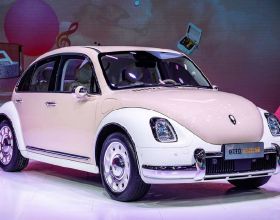26 December 2021
科學家在西澳大利亞金礦斯佩蘭斯區挖一個深深的小洞時發現了一條真的千足蟲。
千足蟲意思是有“一千條腿”,是至今腿最多的昆蟲。他有1306條腿。科學家稱其為“Eumillipes persephone”即千足蟲。
美國弗吉利亞理工大學的Paul Marek研究這個昆蟲,合作者是澳大利亞的生物學家Bruno Buzatto,他叫這個發現是"stunning animal, a marvel of evolution."即“驚人的動物,神奇的進化”以前這是隻在希臘神話中才有的詞。
科學家說雌的有1306條腿,雄的有998條腿。科學家稱由於昆蟲脫毛,外層脫落,腿不總是一樣多。
昆蟲生活在地下60米,長度約95釐米,不到一米長。
之前最長的昆蟲是美國加州發現的750條腿。
千足蟲沒有眼睛,靠觸覺和嗅覺移動,來自於吃真菌的一種昆蟲。
西澳大利亞金礦斯佩蘭斯區是知名的金,鋰和釩礦區。
Scientists drilled a small, deep hole in the Goldfields-Esperance area of Western Australia and found a true millipede.
The word millipede means "a thousand feet," but until now, no insect had ever been found with that many legs, or feet.
The millipede in Australia had 1,306 legs.
The scientists are calling it Eumillipes persephone.
Paul Marek studies insects for Virginia Tech University. He is the lead author of a study recently published in Scientific Reports.
Marek's co-writer is Bruno Buzatto, a biologist in Perth, Australia. He called the discovery a "stunning animal, a marvel of evolution."
The name means "true thousand feet" and uses the name of Persephone, the queen of the underworld in Greek mythology.
The scientists said one of the females had 1,306 legs. Another had 998. The males did not have as many legs. Scientists said the number of legs is not always the same because the insects molt, which means to lose their outer layer as they grow. They add more legs throughout their lives.
They live about 60 meters underground and are about 95 millimeters long with a width of less than 1 millimeter.
Until now, the longest-known millipede was from California. It had 750 legs.
The millipedes do not have eyes. Instead they use touch and smell to move through their environment. They come from a species of insects that eat fungi.
The Goldfields-Esperance area in Australia is known for mining the metals gold, lithium and vanadium.
Scientists say millipedes first appeared 400 million years ago.
There are about 13,000 species known.
The insects play a key role in their environments by eating plants and fungi. They leave behind sugar, carbon and nitrogen.
"These nutrients can then be used by future generations of life," Marek said.
I'm Dan Friedell.
Dan Friedell adapted this story for Learning English based on reporting by the Reuters news agency. Susan Shand was the editor.




















